2018年1月31日 星期三
International Space Station Transits the Full Moon

ISS Daily Summary Report – 1/30/2018
January 31, 2018 at 12:00AM
from NASA http://ift.tt/2nu5SU4
via IFTTT
The First Explorer
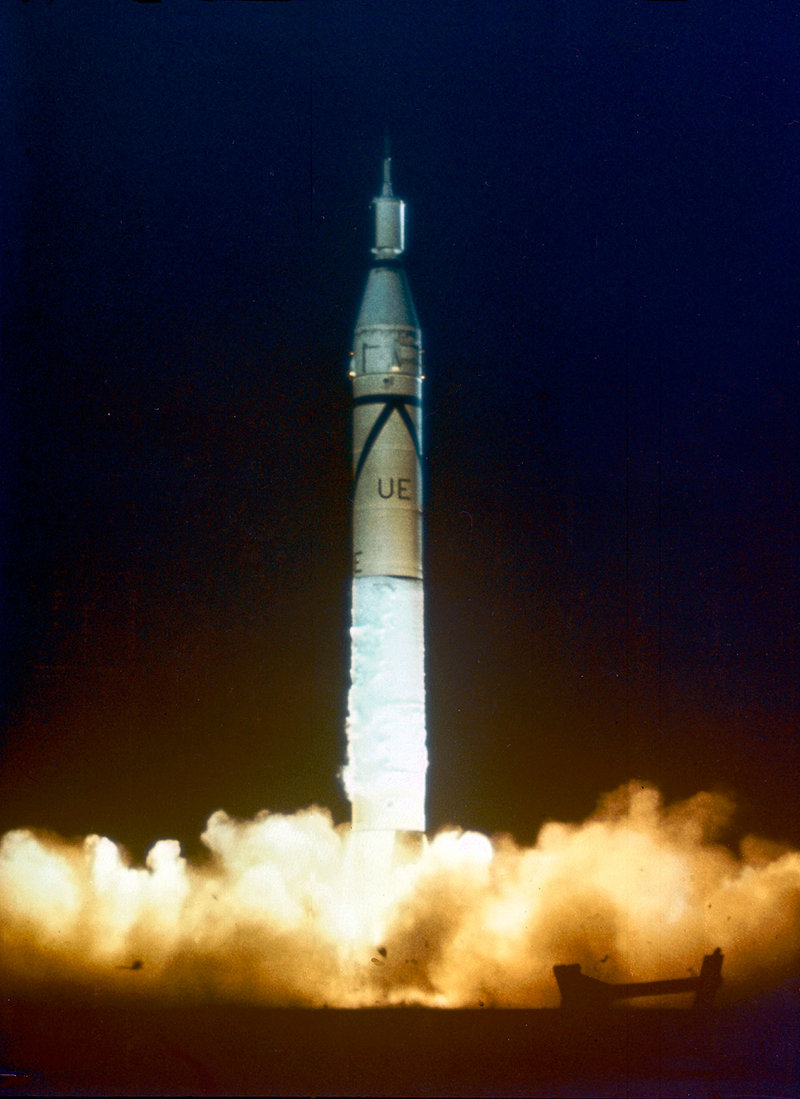
2018年1月30日 星期二
This Is What Happens When People Try To Work Together in DC
At a time when no one here in Washington seems to want to reach out and talk to people with different opinions so as to seek common ground and enable collaboration Jim Bridenstine and Bill Nye are. And the net result? The #stopbridenstine crowd complains. pic.twitter.com/p4M0hY5eZi
— NASA Watch (@NASAWatch) January 30, 2018
Keith's note: Yesterday @BillNye tweeted this statement: "Tomorrow night I will attend the State of the Union as a guest of Congressman Jim Bridenstine - nominee for NASA Administrator - who extended me an invitation in my role as CEO of The Planetary Society. The Society is the world's largest and most influential non-governmental nonpartisan space organization, co-founded by Carl Sagan. While the Congressman and I disagree on a great many issues - we share a deep respect for NASA and its achievements and a strong interest in the future of space exploration. My attendance tomorrow should not be interpreted as an endorsement of this administration, or of Congressman Bridenstine's nomination, or seen as an acceptance of the recent attacks on science and the scientific community. The U.S. Space Program has long been a source of American technical achievement, a symbol of our innovative spirit, and a source of national pride. There are extraordinary opportunities for our country, and for all humanity, in the continued exploration of space. Historically, the Space Program has brought Americans together, and during his address, I hope to hear the President's plans to continue exploring the space frontier."
Bill Nye and the State of a Polarized Union, Planetary Society
"Space exploration is one of the few areas of politics that still offers significant opportunities for bipartisan rapprochement. A shared passion for space can lay the groundwork for a relationship between individuals of very different political beliefs. This can help build trust and mutual respect between them, and potentially allow them to engage on more contentious issues that would otherwise be immediately dismissed or ignored. The current lack of mutual trust between the parties has been identified as one of the threats to a functioning democracy, and space provides a rare opportunity to try and reverse that trend."
from NASA Watch http://ift.tt/2FrzgSb
via IFTTT
Is Falcon Heavy An SLS Killer?
Elon Musk is set to launch his Falcon Heavy rocket, a flamethrower of another sort, Washington Post
"It could also play a part in the Trump administration's plans to return to the moon. Over the weekend, Nick Ayers, Vice President Pence's chief of staff, tweeted that the rocket would have "major (positive) ramifications for US space industry if this goes according to plan." SpaceX has said that the Falcon Heavy would cost $90 million a launch, a fraction of what NASA's more powerful Space Launch System would cost. Last year, Bill Gerstenmaier, NASA's associate administrator for human exploration and operations, said the SLS rocket would cost about $1 billion per launch. With such a vast difference in price, some have wondered if the Falcon Heavy obviates the need for SLS. "If the SpaceX model works, it creates direct competition to SLS," said Howard McCurdy, a professor of public affairs at American University."
from NASA Watch http://ift.tt/2FufWUj
via IFTTT
Saying Goodnight

ISS Daily Summary Report – 1/29/2018
January 30, 2018 at 12:00AM
from NASA http://ift.tt/2DMVYnc
via IFTTT
NASA TV to Air Russian Spacewalk at the International Space Station
January 30, 2018
from NASA http://ift.tt/2DOJ1h0
via IFTTT
Venus at Night in Infrared from Akatsuki
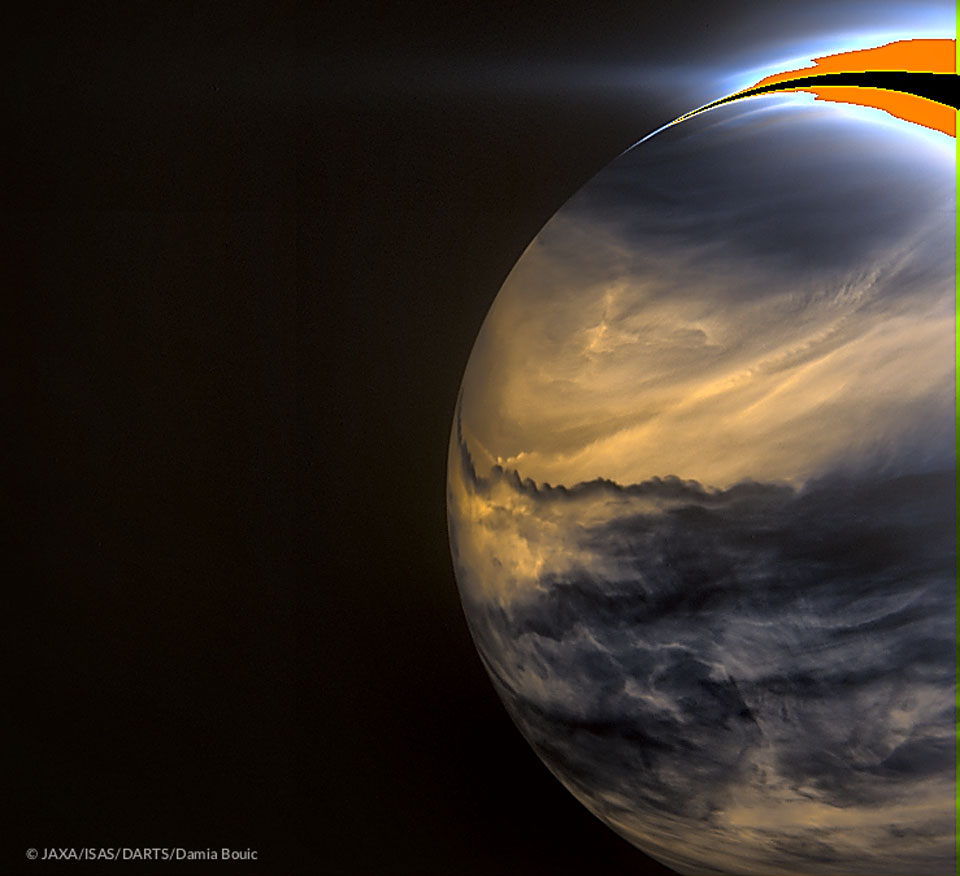
2018年1月29日 星期一
Sen. Nelson's Effort To Undermine NASA
NASA has gone a year without a formal leader--with no end in sight, Ars Technica
"Five months ago, the Trump administration finally put forward a nominee for the post of administrator, Oklahoma Congressman and pilot James Bridenstine. Although he was confirmed along a party-line vote twice during Senate confirmation hearings, he has yet to receive a vote before the full Senate. Increasingly, it is obvious that the White House does not have the votes to confirm Bridenstine in a Senate where Republicans hold only a narrow margin. Sen. Bill Nelson, a Florida Democrat, has led opposition to Bridenstine, saying he is too politically polarizing a figure to lead NASA. Nelson has convinced his fellow Floridian Senator, Republican Marco Rubio, to oppose Bridenstine as well."
|
|
from NASA Watch http://ift.tt/2DWmWvZ
via IFTTT
NASA Television to Air Live Coverage of Upcoming Rare Lunar Eclipse
January 29, 2018
from NASA http://ift.tt/2Gserra
via IFTTT
NASA Invites Media to Upcoming NOAA GOES-S Satellite Launch
January 29, 2018
from NASA http://ift.tt/2njRMp5
via IFTTT
Space Exploration Educators to Speak with NASA Astronaut Aboard Space Station
January 29, 2018
from NASA http://ift.tt/2GrVGUM
via IFTTT
Eroded Layers in Shalbatana Valles

The Spider and The Fly
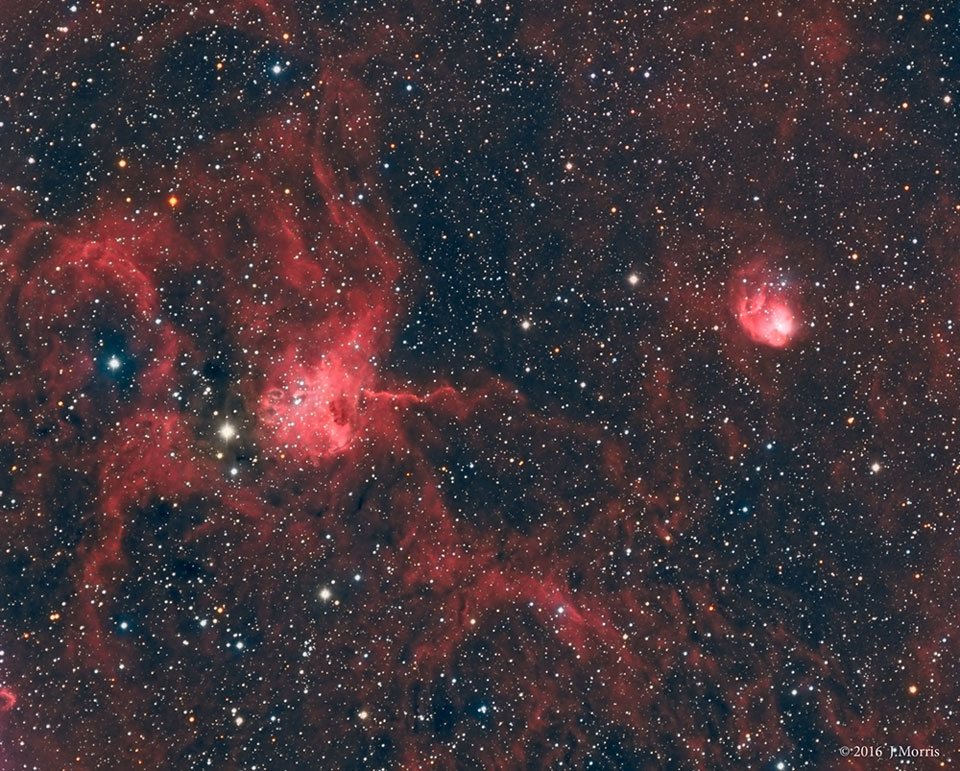
2018年1月28日 星期日
Has Space Commercialization Finally Arrived?
What Trump Gets Right About NASA, Space Exploration, Eric Stallmer, CSF
"Today, a new generation of commercial space companies is taking the lead on space exploration and aerospace innovation. ... Other firms are developing commercial spacecraft systems to reach the moon and asteroids, land on the surface of other planets and preparing to deploy commercial habitats in space. Despite this progress, some inside the space community remain nostalgic about the government owning and controlling space assets. Late last year at the American Institute of Aeronautics and Astronautics' Space annual conference, for instance, then-NASA administrator Charlie Bolden told audience members that he "is not a big fan of commercial investment in large launch vehicles. ... The alternative, which lawmakers need to begin insisting on? Firm, fixed price contracts. Under this model, which works best with privately owned space hardware, taxpayers shoulder far less risk - and companies are incentivized to complete projects on time and under budget."
from NASA Watch http://ift.tt/2ni5poG
via IFTTT
Thinking Of Challenger
Thirty Two Years Of Resonance With Challenger, SpaceRef
"On this day in 1986 I was sitting at my desk as a grad student in the Biology Department at Central Connecticut State University. Everyone knew of my interest in space. I had the radio on. I listened to the launch and then stepped out for a moment. I came back and heard the announcer said that debris could be sighted falling into the water. I was crushed. I had a class to teach in 20 minutes or so. We got word that classes were cancelled for the day so I had to go tell my class that they could leave. The day after Challenger was lost I wrote a letter to President Reagan and sent a cc: to my member of Congress. I asked them to name the new moons of Uranus that Voyager 2 had just discovered during its flyby 5 days earlier after the crew of Challenger. The correspondence chain that followed is shown below. Alas they went with the traditional IAU naming convention."
from NASA Watch http://ift.tt/2DK64cJ
via IFTTT
2018年1月27日 星期六
SpaceX Fans In The Vice President's Office?
Major (positive) ramifications for US space industry if this goes according to plan https://t.co/zGSKk9ZLhT
— Nick Ayers (@nick_ayers) January 27, 2018
from NASA Watch http://ift.tt/2Gmsdvl
via IFTTT
2018年1月26日 星期五
Astronaut James Reilly Nominated To Head USGS
The White House is going to nominate former astronaut James Reilly to head the US Geological Survey
— NASA Watch (@NASAWatch) January 27, 2018
from NASA Watch http://ift.tt/2Fnlkst
via IFTTT
Mark Vande Hei's 'Space-Selfie'

NASA People Like To Work At NASA
AGENCY REPORT National Aeronautics and Space Administration, Best Places To Work
from NASA Watch http://ift.tt/2ne6iha
via IFTTT
Searching For Zuma Someone Found IMAGE
Search For Zuma Unearths Lost NASA Satellite, Aviation Week (Paywall)
"An amateur astronomer on the hunt for the classified Zuma satellite has discovered a long-lost NASA science satellite. "Over the past week. the station has been dedicated to an S-band scan looking for new targets and refreshing the frequency list, triggered by the recent launch of the mysterious Zuma mission," amateur visual and radio astronomer Scott Tilley wrote on his blog skyriddles.wordpress.com." ... Tilley set to work to identify the signal and soon revealed the source: a NASA science satellite known as IMAGE, which disappeared from radar tracking on Dec. 18, 2005.
from NASA Watch http://ift.tt/2Bx5BVo
via IFTTT
ISS Daily Summary Report – 1/25/2018
January 26, 2018
from NASA http://ift.tt/2rEM59H
via IFTTT
Selfie at Vera Rubin Ridge
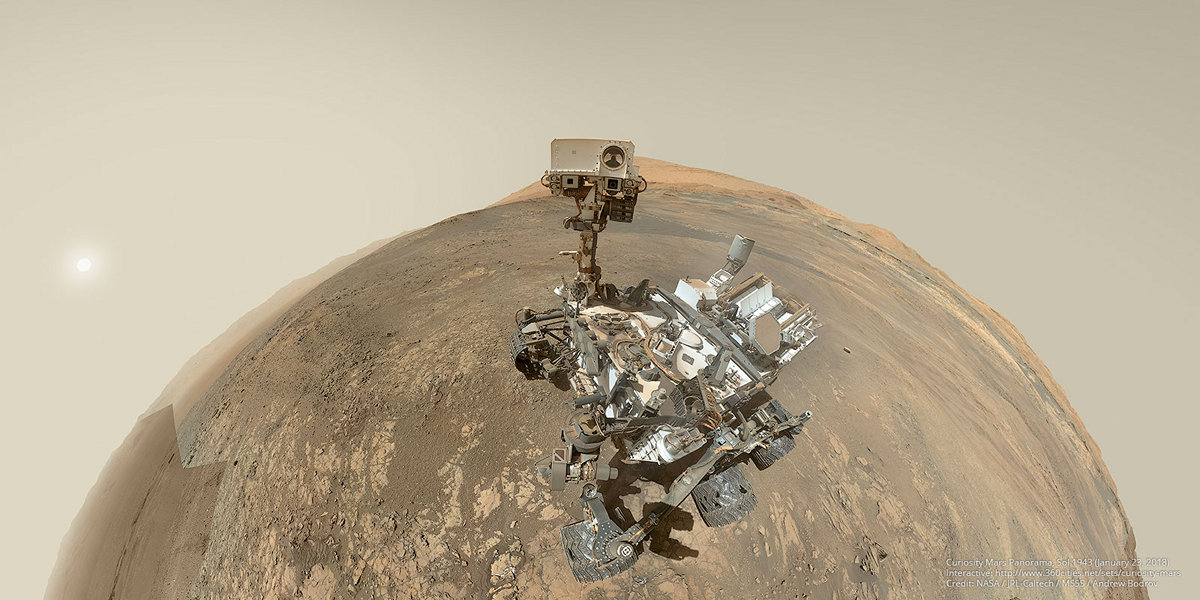
2018年1月25日 星期四
Sierra Nevada to Develop Ground Prototype Deep Space Main Habitat

Sierra Nevada Corporation Signs Two NextSTEP-2 Contracts with NASA, Sierra Nevada Corporation
"Sierra Nevada Corporation (SNC) has formalized its agreement with NASA under Next Space Technologies for Exploration Partnerships-2 (NextSTEP-2), signing a contract to design and develop a prototype for a deep space habitat. The formal signing of the contract under NextSTEP Broad Agency Announcement, Appendix A: Habitat Systems, aimed at enabling potential long-duration human missions in deep space, clears the way for actual production of SNC's prototype in the coming months."
from NASA Watch http://ift.tt/2Ghekys
via IFTTT
ISS Daily Summary Report – 1/24/2018
January 25, 2018 at 12:00AM
from NASA http://ift.tt/2DP3Xn0
via IFTTT
Reaction To Proposed OMB Space Station Funding Cuts
Statement by Sen. Bill Nelson Regarding Administration Space Station Plans
"If the Administration plans to abruptly pull us out of the International Space Station in 2025, they're going to have a fight on their hands. Such a move would likely decimate Florida's blossoming commercial space industry, which is one of the reasons why Congress directed NASA to look at extending the ISS to 2028 and to provide a plan to help scientists and researchers continue experimenting in low-Earth orbit beyond that."
from NASA Watch http://ift.tt/2GhFhCd
via IFTTT
Day of Remembrance 2018

Cartwheel of Fortune

2018年1月24日 星期三
NASA FY 2019 Budget Hints: SLS Alternatives Sought
Sources report that the #NASA FY 2019 budget will advise @NASA to look into non-SLS options to launch missions to Europa. One would assume that @CongCulberson will have an opinion on this. #astrobiology pic.twitter.com/K1YG9sgXg1
— NASA Watch (@NASAWatch) January 24, 2018
from NASA Watch http://ift.tt/2E85Gl9
via IFTTT
NASA FY 2019 Budget Hints
|
|
from NASA Watch http://ift.tt/2n8OeGa
via IFTTT
Bridenstine Nomination Update
Trump has picked a politician to lead NASA. Is that a good thing?, Science
"Although the Trump administration has proposed stiff cuts to earth science at NASA, the Senate has so far warded them off. [Kelvin Droegemeier, vice president for research at the University of Oklahoma in Norman] does not expect Bridenstine to support slashing the agency's budget, especially given that much of NASA's mission can be framed in terms of collecting data that are as applicable to understanding weather patterns as to understanding climate change. "He won't come in and say we're going to discontinue climate financing and take earth science and trash it," Droegemeier predicts. "He absolutely believes the planet is warming, that [carbon dioxide] is a greenhouse gas, and that it contributes to warming." ...
... "But Bridenstine's political chops could serve the agency well, says Laurie Leshin, the president of Worcester Polytechnic Institute in Massachusetts, and a former high-ranking NASA official who was set to help lead Democratic presidential nominee Hillary Clinton's potential transition. "NASA tends to value people who are geeks like them, in a good way," she says. But NASA often has plenty of technical expertise while lacking political savvy. "Somebody with that background, I think we should give him a chance to be successful."
from NASA Watch http://ift.tt/2DvBT4J
via IFTTT
Falcon Heavy Roars To Life
First static fire test of Falcon Heavy complete--one step closer to first test flight! pic.twitter.com/EZF4JOT8e4
— SpaceX (@SpaceX) January 24, 2018
Falcon Heavy hold-down firing this morning was good. Generated quite a thunderhead of steam. Launching in a week or so. pic.twitter.com/npaqatbNir
— Elon Musk (@elonmusk) January 24, 2018
from NASA Watch http://ift.tt/2DBbXc1
via IFTTT
Next Mars Lander Spreads Its Solar Wings

ISS Daily Summary Report – 1/23/2018
January 24, 2018 at 12:00AM
from NASA http://ift.tt/2Bpr02J
via IFTTT
Spinoff 2018 Highlights Space Technology Improving Life on Earth
January 24, 2018
from NASA http://ift.tt/2E4fJI1
via IFTTT
2018年1月23日 星期二
Rocket Lab Reveals Its New Kick Stage
Rocket Lab successfully circularizes orbit with new Electron kick stage, Rocket Lab
"Rocket Lab, a US aerospace company with operations in New Zealand, has successfully tested a previously unannounced kick stage on the Still Testing Electron launch vehicle, using it to circularize the orbits of the two Spire Lemur-2 CubeSats on board. The kick stage was flown and tested on board the recent Still Testing flight that was successfully launched on 21 January 2018 NZDT from Rocket Lab Launch Complex 1 in New Zealand. The complex mission was a success, with the new apogee kick stage coasting in orbit for around 40 minutes before powering up and igniting Rocket Lab's new restartable liquid propulsion engine called Curie, then shutting down and deploying payloads. With the new kick stage Rocket Lab can execute multiple burns to place numerous payloads into different orbits."
from NASA Watch http://ift.tt/2BoEbRr
via IFTTT
NASA Media Call Previews Upcoming Mission to Explore Atmospheric Border
January 23, 2018
from NASA http://ift.tt/2GbvEET
via IFTTT
Celebrating 60 Years of America in Space on Jan. 31
January 23, 2018
from NASA http://ift.tt/2Gax0Qg
via IFTTT
NASA Honors Its Fallen Heroes, Marks 15th Anniversary of Columbia Accident
January 23, 2018
from NASA http://ift.tt/2Bn8Dvm
via IFTTT
Signs of Ships in the Clouds

ISS Daily Summary Report – 1/22/2018
January 23, 2018 at 12:00AM
from NASA http://ift.tt/2rw47ep
via IFTTT
Ribbons and Pearls of Spiral Galaxy NGC 1398
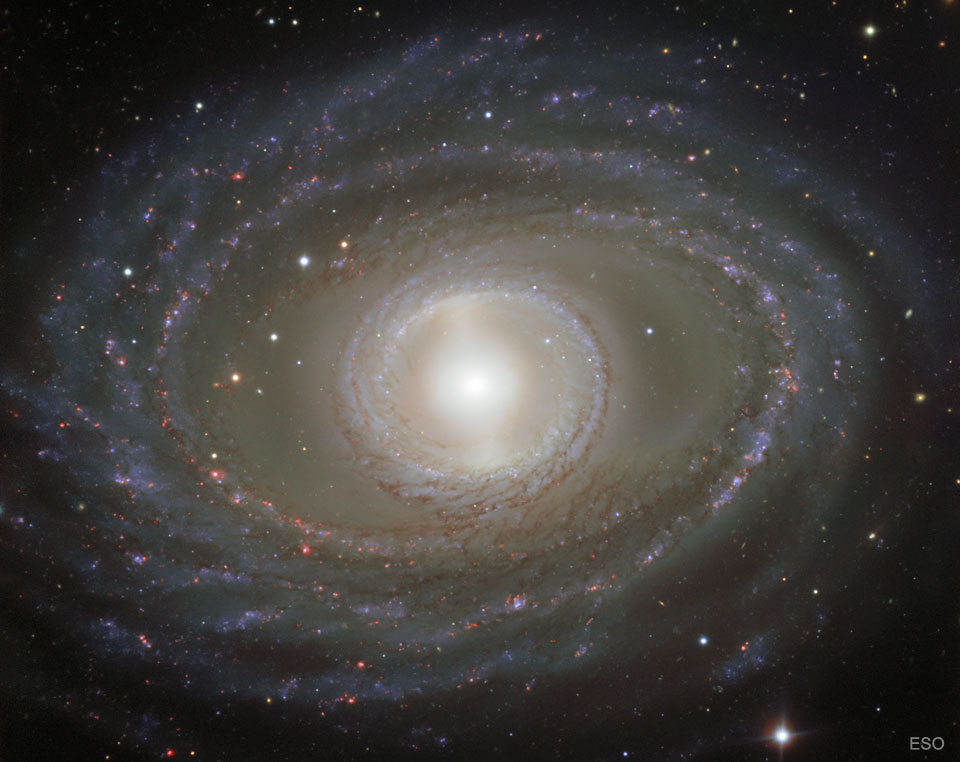
2018年1月22日 星期一
Zuma Update: SpaceX Exonerated by USAF
SpaceX gets good news from the Air Force on the Zuma mission, Ars Technica
"A little more than two weeks have passed since the apparent loss of the highly classified Zuma mission. Since then, SpaceX has publicly and privately stated that its Falcon 9 rocket performed nominally throughout the flight--with both its first and second stages firing as anticipated. Now, the US Air Force seems to be backing the rocket company up. "Based on the data available, our team did not identify any information that would change SpaceX's Falcon 9 certification status," Lieutenant General John Thompson, commander of the Space and Missile Systems Center, told Bloomberg News. This qualified conclusion came after a preliminary review of data from the Zuma launch. That's according to Thompson, who said the Air Force will continue to review data from all launches."
from NASA Watch http://ift.tt/2E22bws
via IFTTT
Today's Shutdown News From NASA: We're Shut Down
Today's news from @NASA pic.twitter.com/LcNKwMoysg
— NASA Watch (@NASAWatch) January 22, 2018
from NASA Watch http://ift.tt/2n3CHHZ
via IFTTT
Government Shutdown Shuts Down Falcon Heavy Test
SpaceX Can't Test Falcon Heavy During U.S. Government Shutdown, Newsweek
"A statement from the 45th Space Wing read: "Due to the shutdown removing key members of the civilian workforce, the 45th Space Wing will not be able to support commercial static fires taking place on KSC. Without our civilian workforce, the 45th SW is unable to support launch operations as well." The 45th Space Wing is a department of the Air Force supporting space missions. The Verge reported that it was initially unclear if the static test could take place without the 45th's support, or if the test will be on hold until civilian staff are no longer restricted. Today, however, SpaceX confirmed the launch will halt the static fire. "This shutdown impacts SpaceX's Falcon Heavy demonstration, which is critical for future [national security space] missions," John Taylor, a SpaceX spokesperson, said in a statement to The Verge."
from NASA Watch http://ift.tt/2DyMikf
via IFTTT
2018年1月21日 星期日
An Immersive Visualization of the Galactic Center

2018年1月20日 星期六
The Upper Michigan Blizzard of 1938
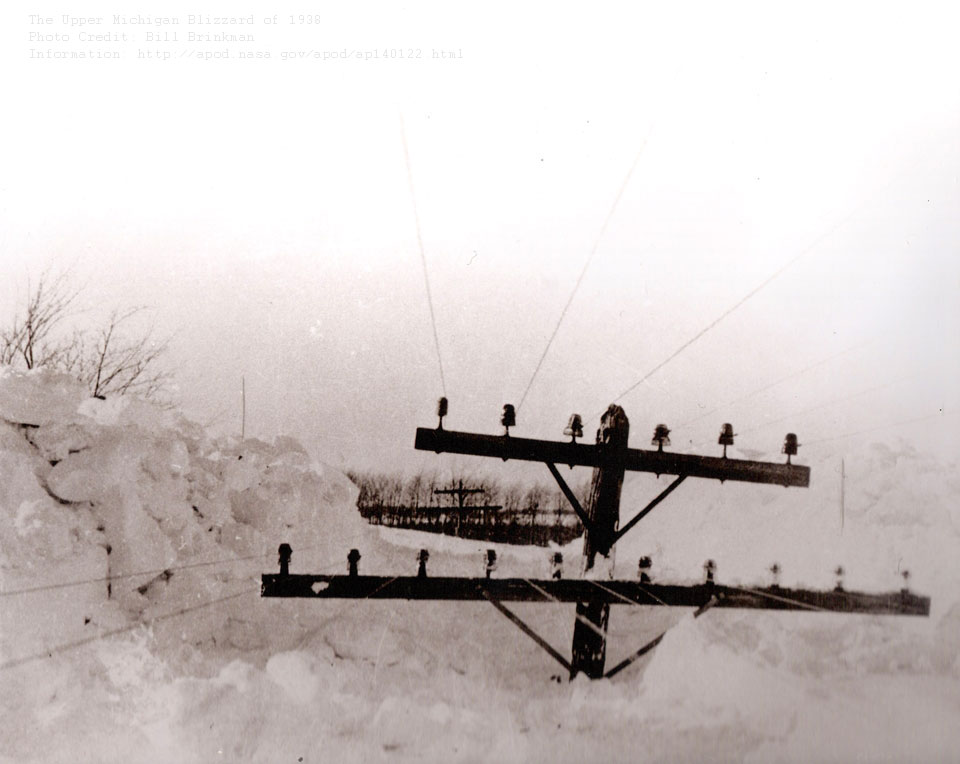
Rocketlab Makes It To Orbit
Rocketlab Places Three Satellites Into Orbit (with video), SpaceRef
"Rocketlab conducted its second Electron launch today placing three cubesats into orbit. The launch occurred from the remote Māhia Peninsula in New Zealand. Mission control is located in Auckland, New Zealand. On board was a Planetlab cubesat named Dove Pioneer which will conduct Earth resource imaging and two Lemur-2 cubesats for Spire which will be used for weather and ship tracking. In all of its social media postings the company used #stilltesting tag to denote the fact that these initial launches still involve significant testing and proof-of-concept studies."
from NASA Watch http://ift.tt/2DuvVW4
via IFTTT
Life Goes On Aboard ISS During The Shutdown
Don't worry about the crew aboard the International Space Station during the U.S. government #shutdown They are managing to find productive things to do up there. https://t.co/4PhwkyK7DE
— NASA Watch (@NASAWatch) January 20, 2018
Очень часто спрашивают, а летаем ли мы на пылесосе по станции? Приходилось отвечать, что не пробовал. А тут во время субботника подумал, что уже третий полет... пора провести летные испытания пылесоса ✌😉🚀 // Flight tests of vacuum cleaner aboard the International Space Station pic.twitter.com/qQpoQx5OLL
— Anton Shkaplerov (@Anton_Astrey) January 20, 2018
from NASA Watch http://ift.tt/2Dlq41c
via IFTTT
Old Moon in the New Moon s Arms

2018年1月19日 星期五
Internal Memo: How NASA Will Shut Down
NASA ARC Internal Memo: Informal Notice of Employee Furlough Status - Non Excepted
"Annual funding for the Government will expire at midnight on January 19, 2018. In the event no further agreement is reached to fund Federal agencies, Federal departments and agencies will not be permitted to incur further financial obligations performing activities funded by annual appropriations, except those related to the orderly suspension of operations or performance of excepted activities. This means that employees who do not perform activities excepted by law will be furloughed and unable to work.
Our contingency plan assumes that International Space Station (ISS) activities will continue to protect the lives of the crew members on orbit and the safety and security of the ISS. Existing satellite missions in operation also will continue to protect the satellites and the data being collected. In addition, other activities involving protection of life and property will continue. All other Agency activities not determined to be legally exempt will stop."
from NASA Watch http://ift.tt/2Dxxt0G
via IFTTT
JSC Center Director Ellen Ochoa Is Retiring
NASA JSC Internal Memo: Center Director Ellen Ochoa Is Retiring
"Earlier today at the All Hands, I let people know that I am going to retire from NASA at the end of May. It's a really tough decision to determine when to make that transition; for me, it comes down to my personal situation. I reach 30 years at NASA, and my younger son turns 18, so this summer is a natural point for our family in which to move on to the next phase. We'll be moving to Boise, ID, and I intend to be involved with a number of activities that interest me (including getting back to playing flute, which I once considered for a career!). Of course, I'll continue - always -- to be a strong proponent of NASA and STEM activities in general."
from NASA Watch http://ift.tt/2mQGSG8
via IFTTT
Prepping the Parker Solar Probe for Space

The Precise Moment A Young Woman's Space Career Began
The moment @ScheferAbby learned she is #BoulderBound! So excited to have her accepted to @CUBoulder and @CUEngineering in her dream aerospace program! pic.twitter.com/AoXwQVEeXv
— Carol Scott (@carolscott05) January 18, 2018
from NASA Watch http://ift.tt/2Dne52Q
via IFTTT
ISS Daily Summary Report – 1/18/2018
January 19, 2018 at 12:00AM
from NASA http://ift.tt/2mVsoFH
via IFTTT
Clouds in the LMC

2018年1月18日 星期四
NASA Announces Updated Crew Assignments for Space Station Missions
January 18, 2018
from NASA http://ift.tt/2FP4Mum
via IFTTT
Jupiter’s Swirling South Pole

Is Democratic Opposition To Bridenstine Wavering?
|
|
from NASA Watch http://ift.tt/2mNYEtH
via IFTTT
Why Should One Senator Boss NASA Around?
|
|
from NASA Watch http://ift.tt/2Dr3tUY
via IFTTT
Long-Term Warming Trend Continued in 2017: NASA, NOAA
January 18, 2018
from NASA http://ift.tt/2DlFR3Y
via IFTTT
2018年1月17日 星期三
Bridenstine Nomination Version 2.0
Senate Commerce, Science, and Transportation Committee Executive Session: Bridenstine Nomination
"The U.S. Senate Committee on Commerce, Science, and Transportation will hold an executive session on Thursday, January 18, 2018 at 11:00 a.m. in Hart 216 to consider the following presidential nominations. ..."
Keith's note: In addition to Bridenstine there here are 7 other nominees to be considered at this executive session. During his confirmation hearing in November 2017, the bulk of the questions went to Bridenstine and not to the other nominees sitting at the table. Bridenstine's nomination passed along party lines. With an even larger group of nominees one might expect that there will be fewer questions directed at Bridenstine this time. One would expect, that is.
A live video of the markup and additional information will be available at http://ift.tt/1dX5KON. The session will be live tweeted at @NASAWatch
- Bridenstine Survives His Confirmation Hearing
- Bridenstine's Written Answers To Questions From Congress
from NASA Watch http://ift.tt/2rhqu7c
via IFTTT